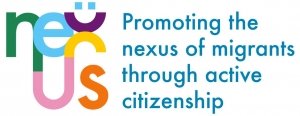Digital Referendum in Kortrijk
Using digital referendum to improve citizen participation in decision making in the city of Kortrijk.
Tool Self-Assessmet
- Reflect back on the objective of the tool you built: did you exceed it, or fall short? If so, why?
The objective of this civic tool was to involve the citizens of Kortrijk to answer the following question through a digital referendum: “Do you agree that the centre of Kortrijk should be car-free for a fixed Sunday every month?” The aim is to include citizens in policy-making in Kortrijk.
The tool exceeded our expectations, 10,000 out of the 60,000 citizens with voting rights (participation rate of 16%) in Kortrijk participated in this referendum. Our threshold was 2,000 participants.
- What are the tools’ metrics for success and what does metric say – how well did the tool do?
These were the metrics of success:
For the results of the referendum to be binding, there had to be a minimum of at least 2,000 participating citizens and a difference of 2.5% between the “yes” and “no” votes. Ultimately, 9,880 citizens participated with 57% voting “no” and 43% voting “yes” (14% difference).
The tool did well with engaging with citizens and including them in the city of Kortrijk’s policy making.
- Were your assumptions that the tool you built would: increase participation/engagement or tackle an issue/raise awareness correct?
Yes, our assumptions that the tool would increase participation and engagement with citizens was correct.
- Do you think you chose the right approach – and what would you do differently?
Yes, I think we chose the right approach. Vincent Van Quickenborne, Mayor of Kortrijk explains, “This is the best way to include citizens in our policy-making. A referendum has a much bigger impact than anything that is discussed in the city council. We’re talking about almost 10,000 people, while there’s only a few dozen people in the council. We want to organise a referendum like this every year, and we’re going to ask our citizens what they want to vote about.”
- What are you hearing from users? What do they enjoy in tool? What do they find challenging?
The users enjoyed using this tool, this is evident in the turnout. The topic of the digital referendum was relevant and linked directly with the citizens’ daily lives which increased engagement with the tool. The city of Kortrijk also set up an information campaign laying out the positive and negative arguments for the referendum, thus informing the citizens on the topic.
- Did your tool deliver what you were hoping for? Are they useful for your key user audience? Are they being adopted?
Yes, the tool delivered what we were hoping for. It engaged citizens in the policy-making process and has led to initiating annual digital referendums. The added value of this tool is that it engaged citizens in the topic of the referendum which for many citizens is not a topic that is in their immediate sphere of interest.
- What worked well through the implementation process? What areas have room for improvement?
There are several factors that worked well through the implementation process. The first factor was that the initiative had a strong start. The initiative and the tool were introduced at the city’s New Year’s reception and 5th and 6th graders of the Don Bosco-college were given the opportunity to be the first voters, showing how simple and easy to use the tool is. The initiative also had catchy videos, shared on the city newsletter and a great social media campaign. The second factor was that the city of Kortrijk shared the first results of the digital referendum two weeks after the launch which sparked a new wave of awareness and attention to the tool. The city also immediately announced the outcome of the digital referendum in a press conference.
Tool ID
- GOAL:Increasing citizen involvement in decision making through digital referendum
- Made by:City of Kortrijk
- Country:Belgium
- YEARS ACTIVE:2019 – to date


